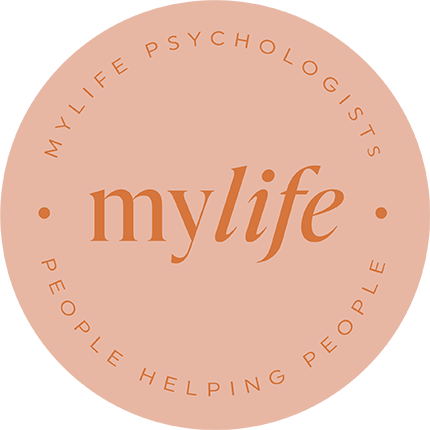Workplaces are filled with social interactions – team meetings, casual chats in the lunchroom, networking events, or presentations to colleagues. For many, these moments are routine. But if you live with social anxiety, even small interactions can feel overwhelming. A brief conversation with your manager may feel like an interrogation, and a team presentation can feel like standing under a harsh spotlight.
Social anxiety doesn’t just cause discomfort – it can impact performance, confidence, and career growth. The good news is that social anxiety is highly treatable, and with the right strategies and support, it is possible to manage symptoms and thrive at work.
This blog outlines what social anxiety is, what causes it, how it can impact work, and practical strategies to manage it effectively.
We’ll also share two fictional but realistic case examples – James and Maya – to bring these experiences to life.
Case Example 1: James’ Story
James is a junior lawyer with a sharp analytical mind. On paper, he’s excelling – he meets deadlines, produces excellent work, and his supervisors value his diligence. But James lives with social anxiety, which makes many everyday tasks feel like mountains to climb.
- He dreads team meetings, staying quiet even when he has great ideas.
- He spends hours re-reading emails before hitting send, terrified he’ll sound unprofessional.
- Networking events leave him panicked, so he avoids them altogether.
James often feels invisible at work, even though he works hard. He worries that his silence is seen as disinterest, when in reality it’s fear of being judged.
What is Social Anxiety?
Social anxiety disorder (also known as social phobia) is a mental health condition where people experience an intense and persistent fear of being negatively evaluated in social or performance situations.
It’s not just “being shy” or “introverted.” Social anxiety is marked by:
- Strong fear of judgment or embarrassment.
- Physical symptoms such as sweating, trembling, racing heart, or nausea.
- Avoidance behaviours, like skipping meetings, declining presentations, or avoiding social spaces.
- Persistent worry before, during, and after interactions.
At work, it may show up as:
- Hesitating to speak up in meetings.
- Replaying conversations and second-guessing yourself.
- Feeling drained by everyday interactions.
- Avoiding tasks that involve visibility or evaluation.
Social anxiety is not a character flaw. It’s a recognised, treatable condition.
Case Example 2: Maya’s Story
Maya works in marketing and has always been described as “creative.” Yet her social anxiety makes career growth feel almost impossible.
- She avoids client presentations, delegating them to colleagues whenever she can.
- She struggles to advocate for herself in performance reviews, fearing she’ll be seen as arrogant.
- She eats lunch at her desk to avoid small talk with co-workers.
Over time, Maya feels stuck in her role. She wants to take on leadership responsibilities, but the idea of being “the face” of projects terrifies her. Her anxiety isn’t about lack of ability – it’s about fear of judgment.
What Causes Social Anxiety?
Social anxiety usually develops from a mix of biological, psychological, and environmental factors:
- Biological
- Family history of anxiety disorders.
- Differences in brain structures (like an overactive amygdala, which processes fear).
- Psychological
- Negative experiences in childhood, such as bullying, criticism, or rejection.
- Perfectionism or harsh self-criticism.
- Environmental
- Stressful work cultures with constant evaluation.
- Open-plan offices that make people feel observed.
- Lack of supportive managers or colleagues.
Importantly: social anxiety is not caused by weakness or laziness. It is a genuine mental health condition.
How Social Anxiety Affects Work
When left unaddressed, social anxiety can ripple through a person’s career and wellbeing:
- Missed opportunities: Promotions, projects, or networking may be avoided.
- Excessive preparation: Hours spent rehearsing or perfecting work, leading to exhaustion.
- Reduced productivity: Constant worry interferes with concentration.
- Isolation: Avoiding social interactions limits workplace support and relationships.
- Career stagnation: Anxiety may prevent progression into leadership or client-facing roles.
Studies show that people with social anxiety are more likely to experience absenteeism (taking days off to avoid social events) and presenteeism (being at work but not fully able to perform due to anxiety).
Common Workplace Triggers
Typical triggers include:
- Speaking in meetings or giving presentations.
- Job interviews and performance reviews.
- Networking events and small talk.
- Writing emails or making phone calls.
- Open-plan offices where people feel observed.
- Interactions with authority figures (e.g., managers).
Even small moments, like greeting colleagues in the morning, can be a source of anxiety.
Myths and Misconceptions about Social Anxiety
There are many myths about social anxiety. Here are a few to challenge:
- Myth: “It’s just shyness.” → Shyness is a personality trait. Social anxiety is a clinical condition.
- Myth: “You just need to push yourself.” → Exposure helps, but without strategies and support it can worsen symptoms.
- Myth: “People with social anxiety can’t be leaders.” → Many people with social anxiety are capable, thoughtful, and empathetic leaders.
- Myth: “It will go away on its own.” → Without support, social anxiety often persists. Treatment is effective and recommended.
First Aid: Managing Social Anxiety in the Moment
Sometimes anxiety strikes in the middle of a workday. Here are strategies you can use straight away:
- Ground yourself: Try slow breathing or the “5-4-3-2-1” technique (name five things you see, four you feel, three you hear, two you smell, one you taste).
- Prepare talking points: Jot down key notes before a meeting to ease pressure.
- Reframe unhelpful thoughts: Replace “Everyone will notice if I make a mistake” with “Most people are focused on their own work.”
- Use micro-exposures: Start small, like greeting a colleague, before tackling larger challenges.
- Shift focus outward: Pay attention to what others are saying instead of monitoring your own performance.
Building Confidence Over Time
Confidence doesn’t mean never feeling anxious. It means learning you can handle situations despite anxiety. To build it:
- Set small goals: For example, contribute one comment in a meeting per week.
- Celebrate progress: Keep track of “wins,” even small ones.
- Normalise mistakes: Everyone stumbles sometimes—it doesn’t define your abilities.
- Practise outside of work: Join a group class or volunteer role where the stakes are lower.
- Seek feedback: Constructive feedback reduces uncertainty and helps reframe fears.
Communicating With Managers or HR
Disclosing social anxiety can feel daunting, but it may lead to valuable support. Possible accommodations include:
- Quiet workspaces or hybrid work options.
- Clearer expectations and structured feedback.
- Opportunities to gradually build up exposure (e.g., shorter presentations).
- Access to Employee Assistance Programs (EAPs).
You don’t need to share everything – sometimes a small request, like asking for a meeting agenda in advance, can make a big difference.
Creating Supportive Workplaces
Employers can reduce stigma and foster inclusion by:
- Training managers to recognise signs of anxiety.
- Encouraging open but voluntary conversations about mental health.
- Offering flexible work arrangements.
- Creating optional, low-pressure social opportunities.
- Providing constructive and respectful feedback.
Supportive cultures benefit everyone – not just those with social anxiety.
Self-Care Outside of Work
Resilience at work is strengthened by what you do outside of it:
- Exercise: Reduces stress hormones and improves mood.
- Sleep: Quality rest supports emotional regulation.
- Nutrition: Balanced eating helps stabilise energy.
- Relaxation: Yoga, mindfulness, or journaling reduce stress.
- Social support: Friends and family provide perspective.
- Digital boundaries: Limiting emails/social media after work aids rest.
Professional Support and Treatment
Social anxiety is one of the most treatable anxiety disorders. Evidence-based options include:
- Cognitive Behavioural Therapy (CBT) – challenges unhelpful thoughts and avoidance patterns.
- Exposure therapy – structured, gradual exposure to feared situations.
- Mindfulness-based therapies – reduce rumination and self-focus.
- Medication – prescribed by a GP or psychiatrist, sometimes in combination with therapy.
- Group therapy – provides practice and connection with others facing similar struggles.
Final Thoughts
Social anxiety at work can feel overwhelming, but you don’t have to face it alone. By understanding your triggers, using practical strategies, and seeking support when needed, it’s possible to reduce anxiety and build confidence.
At MyLife Psychologists, we provide a warm and supportive environment to help you:
- Understand the roots of your anxiety.
- Learn evidence-based coping tools.
- Build confidence in professional and social situations.
Get in touch to book a free 15-minute call with our Care Coordinator to explore how our psychologists can support you.
References and Resources
- American Psychiatric Association. (2022). DSM-5-TR: Diagnostic and Statistical Manual of Mental Disorders (5th ed., text rev.).
- Australian Psychological Society (2022). Anxiety Disorders.
- Beyond Blue. Social anxiety disorder.
- Black Dog Institute. Social anxiety factsheet.
- Centre for Clinical Interventions. Self-help resources on social anxiety.







